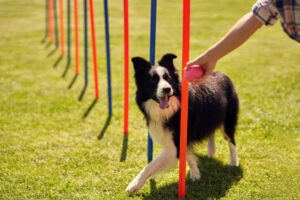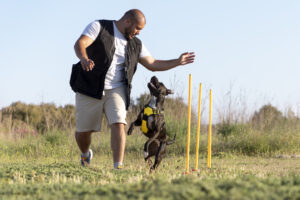A healthy lifestyle is as important for our furry companions as it is for us. Just like humans, dogs also need regular exercise and proper nutrition to stay fit and fabulous. However, maintaining a healthy lifestyle for dogs requires an understanding of healthy dog fitness and addressing common dog fitness problems. In this article, we will explore the significance of healthy dog fitness and discuss strategies to keep our canine friends in the best shape possible.
Understanding Healthy Dog Fitness:
Healthy dog fitness encompasses various aspects, including physical exercise, mental stimulation, and maintaining an appropriate weight. Regular exercise helps dogs to burn off excess energy, strengthen muscles, improve cardiovascular health, and maintain a healthy weight. Mental stimulation through interactive toys, training, and puzzles keeps their minds sharp and prevents boredom. Additionally, maintaining an ideal weight is crucial for preventing obesity-related health issues.
Common Dog Fitness Problems:
Just like humans, dogs can face fitness problems that hinder their overall health. Some common Dog fitness problems include obesity, joint issues, behavioral challenges, and lack of exercise. Obesity is a growing concern among dogs and can lead to numerous health complications, such as diabetes, joint problems, and reduced lifespan. Joint issues, such as arthritis, can limit a dog’s mobility and make exercise difficult. Behavioral challenges, like laziness or excessive energy, may hinder a dog’s willingness to engage in physical activities.
Strategies for Maintaining a Healthy Lifestyle:
Regular Exercise Routine: Establish a consistent exercise routine tailored to your dog’s age, breed, and fitness level. Incorporate activities such as daily walks, runs, playtime at the park, or swimming sessions.
Balanced Diet: Provide a nutritious and well-balanced diet suitable for your dog’s age and breed. Consult with a veterinarian to determine the appropriate portion sizes and choose high-quality dog food that meets their nutritional needs.
Interactive Toys and Mental Stimulation: Engage your dog’s mind with interactive toys, treat puzzles, and obedience training. Mental stimulation is as important as physical exercise and helps prevent behavioral issues caused by boredom.
Monitoring Weight: Regularly monitor your dog’s weight and body condition. If your dog is overweight, consult with a veterinarian to create a weight management plan, including dietary adjustments and exercise modifications.
Adequate Rest: Dogs need sufficient rest to recover and recharge. Provide a comfortable sleeping area and ensure they have enough quiet time for relaxation.
Regular Veterinary Check-ups: Schedule regular visits to the veterinarian to monitor your dog’s overall health, detect any underlying issues, and receive professional advice on maintaining a healthy lifestyle.
Conclusion:
Maintaining a healthy lifestyle for our beloved dogs is essential for their overall wellbeing and longevity. By understanding Healthy dog fitness and addressing common dog fitness problems, we can ensure our furry friends remain fit, fabulous, and full of vitality. Regular exercise, a balanced diet, mental stimulation, and monitoring their weight are key components of a healthy lifestyle. Remember, a healthy dog is a happy dog, and by investing time and effort into their fitness, we are promoting their overall happiness and quality of life.







